IDL Retro | How Neeltje Jans stood in the way of a Tour victory for Nairo Quintana
CyclingThursday, 02 November 2023 at 07:00
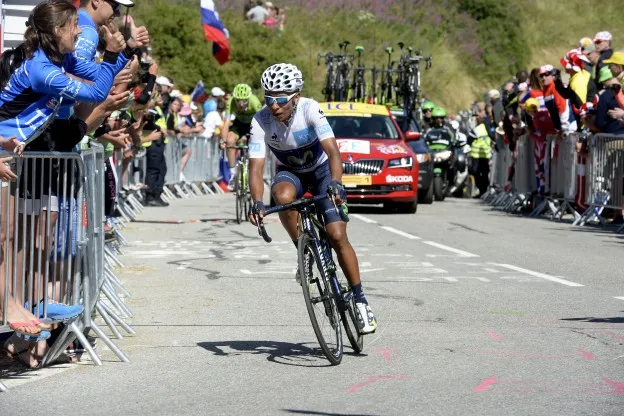
The sky turns greyer and the wind picks up. The peloton slowly starts to run wild. It is the second stage of the 2015 Tour de France, which takes place between Utrecht and Neeltje Jans. With about fifty kilometers to go, echelons determine the course of the race. The large group falls apart. At the end of the race, won by the German sprinter André Greipel, several favorites for the overall victory lose significant amounts of precious time. This includes Nairo Quintana. The Colombian climber finishes at 1.27 from the first group, which contains top favorite and rival Chris Froome. As it would turn out, the gap created in the stage to Neeltje Jans is decisively large.
ADVERTISEMENT
In recent months, things have been quiet when it comes to Nairo Quintana. The climbing goat finished sixth in the general classification of the Tour in the summer of 2022. It seemed like a serious revival, until he had his result scratched due to the use of tramadol. That was not the end of it. He was sidelined by his then employer Arkéa-Samsic and started a hopeless search for a new team. On his own, he reached the podium of the national championship of Colombia in February, dressed in a sponsorless, white outfit. Was this the way for the former prodigy, winner of the Giro and the Vuelta, to seemingly anonymously say goodbye? For a long time, it looked that way. Until last week, when his old team Movistar offered him a one-year contract.
The remarkable return to Movistar, where Quintana was pushed out in 2019
ADVERTISEMENT
Nobody really saw it coming. Quintana himself had repeatedly expressed his hope for a return to his old employer Movistar. The team where he achieved his greatest successes and broke through about ten years ago after a whirlwind Tour de France. For example, in the 2013 edition, he won a stage, the mountain jersey, the young rider classification and stood as number two next to Chris Froome on the podium in Paris. But Movistar was also the team where, based on his role in the remarkable documentary series El día menos pensado, he was pushed out in 2019. No, it was better for Nairoman to leave. That's why his return to the old nest is especially notable.
Back to the 2015 Tour de France. At the beginning of the second week, yellow jersey holder Froome once again strikes in the battle for the general classification. Big names such as Alberto Contador and Vincenzo Nibali lose many minutes on the way to the top of La Pierre Saint-Martin, the first serious Tour climb of that year. Quintana limits the damage somewhat and finds himself just over three minutes behind the thirty-year-old Brit. A substantial amount of time, but there were still two weeks left to try and break Froome's Sky fortress. After all, Quintana already had a second place on his palmares. The yellow in Paris, that was the goal. The Colombian kept his spirits up and set his sights on the Alps.
In that mountain range, it ultimately becomes clear just how tense the race would get. Froome's luxury domestique Geraint Thomas cracks, and Richie Porte had also seen better days in terms of form. Actually, in the third week, yellow jersey holder Froome mainly relies on the helping hands of Wout Poels. Quintana smells blood. During the Alpine stage to La Toussuire, spectacularly won by Vincenzo Nibali, the Colombian creates a gap with Froome of about thirty seconds, for the first time. After crossing the finish line, the leader of Movistar waits under the arch. He wants to witness the suffering in Froome's eyes as he crosses the line, to gauge whether a final attack on the yellow jersey still has a chance of success. Because the next day awaited a finish on Alpe d'Huez.
ADVERTISEMENT

Nairo Quintana going full throttle on Alpe d'Huez
The twentieth stage becomes an every-man-for-himself situation. Already on the penultimate climb of the day, the Croix de Fer, both Quintana and his right-hand man Alejandro Valverde, who himself is third in the general classification, attack Froome, who barely manages to parry. At the foot of Alpe d'Huez, the same happens again. Froome parries again. Quintana tries once, twice, three times. And then, just like the day before, the gap opens up. Nairoman slowly dances away from his British rival, against whom he has to make up a good two and a half minutes over the course of just about ten kilometers. The gap steadily grows, from ten to twenty to forty seconds. Froome sees only the back of his support and confidant Poels in front of him. He looks pale, his elbows are out, and his head slowly bows down.
Quintana could have become first Colombian Tour winner on Alpe d'Huez
On that scorching hot afternoon, Froome has to work harder than ever to retain his yellow jersey. With every passing kilometer, he loses more seconds. When Quintana reaches the finish in the famous ski village, he clenches his fist. As if he himself had not really expected to be able to crack the yellow jersey. Froome crosses the finish line like an exhausted miner. In the climb to Alpe d'Huez, his lead has more than halved. If the stage had lasted fifteen minutes longer, Quintana would have become the first Colombian Tour winner. Now his deficit to Froome was 1:12. A quick calculation shows that Quintana actually lost his Tour on the windy roads towards Neeltje Jans. Had he not finished in peloton two there, then with his impressive set of climbing legs from that particular Tour de France, he could have brought the yellow to Paris.
Actually, from then on, things gradually went downhill for Quintana. In 2016, he still won the Vuelta after another beautiful battle with Froome. His leading status in the Tour was overshadowed by the arrival of Mikel Landa at Movistar. Landa and Quintana were like water and fire. Quintana became more reserved and seemed to sit more cramped on the bike. He no longer flew in his characteristic style but fluttered more and more, without the real conviction of yore. In a stunning manner, he won a Tour stage from the early breakaway over the Galibier, on a day when his team kept the gap small in the peloton and set the pace for his rival within the team: Landa. It was a sign on the wall that the paths of Movistar and Quintana were heading for a separation.
ADVERTISEMENT
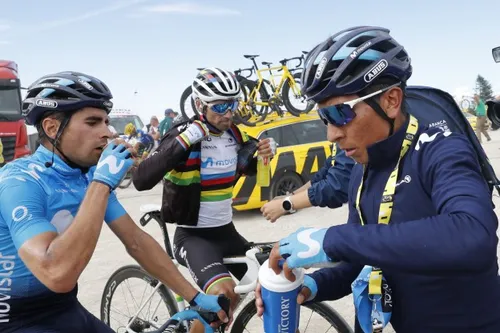
Mikel Landa (left) and Nairo Quintana did not give each other a second glance
As it turns out, that separation would last four seasons. After four years, Movistar and Quintana remarry. A new marriage that raises eyebrows here and there. The marital conditions in the new contract of the Colombian mountain goat will become clear during the upcoming season. It is nice that such a former top athlete does not wither away in obscurity. It is also good that Quintana's last race was not a national championship in a self-purchased cycling shirt from the local Intersport. In that sense, going deep, working hard and accepting your diminished status pays off. Quintana trained on his own for a whole year, hoping that someone would offer him a second chance after his tramadol affair. And so it happened.
Whether we'll actually see a revival of those spectacular old days in the dark blue of Movistar is still very much in question. A role as a domestique for the now almost 34-year-old Colombian seems more likely than a spot in the spotlight in the biggest races. In any case, it will be a familiar sight to watch Quintana, in his characteristic climbing style, find his literal and figurative way up mountains again next year. However, Nairoman is unlikely to come as close to a Tour victory as he did in 2015.
IDL-productions
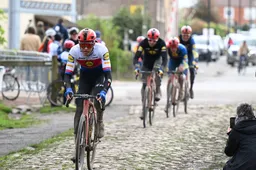
Last year, he was spot on: Lidl-Trek team leader De Jongh names his spring surprise for 2026
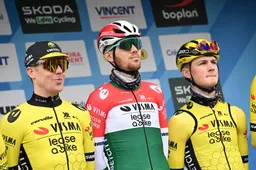
Attila Valter on why he left Visma | Lease a Bike: 'If it is what it is after three years, its not going to change'
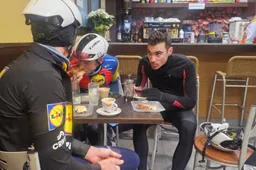
Still in black, but soon in colorful Lidl-Trek jersey: Juan Ayuso praises new environment
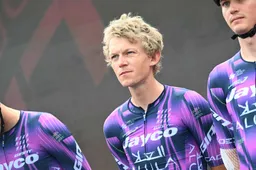
Bouwman not afraid to change at 32 after first disaster year outside of Visma: 'Have to be honest with myself'
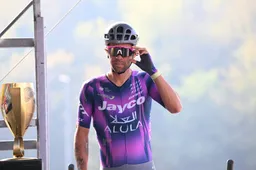
Sanremo, a world title and the yellow jersey: Michael Matthews escaped death - and that reignited his spark
Latest Cycling News
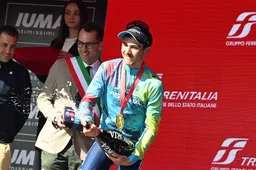
No one embodied Astana metamorphosis better than Scaroni, who is aiming higher than ever in 2026
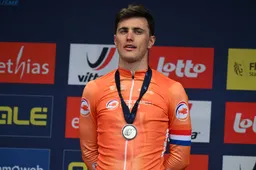
Tour chances of Kooij, role distribution and ambitions: sprint leader Mark Renshaw is delighted after introductions at Decathlon
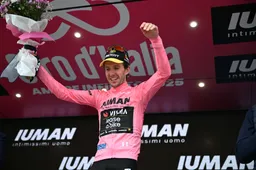
Big surprise: Simon Yates (33) puts an immediate end to his career
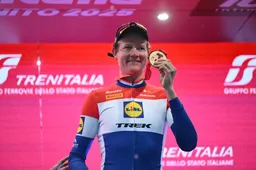
Hoole names difference between "beautiful leader" Mads Pedersen and Mathieu van der Poel
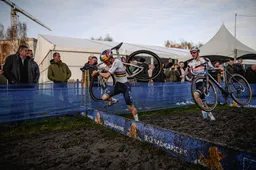
Pidcock keeps focus on road cycling, but cross country in 2026 is a possibility - albeit with a condition
Popular Cycling News

🎥 Pogacar already focused on Milano–Sanremo: World Champion goes all-out on the Poggio

Big surprise: Simon Yates (33) puts an immediate end to his career
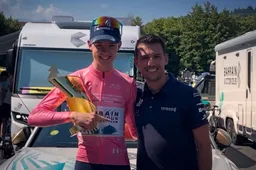
A winner in the Giro and Roubaix: are comparisons between Jakob Omrzel and Tadej Pogacar justified? 'More of a climber'
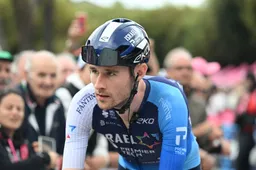
Finally an end to all rumours: Derek Gee has found a new team and signs contract through 2028
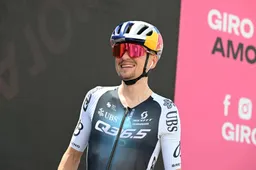
Why Tom Pidcock doesn't take his teammates to the Teide or Sierra Nevada, but at 2,700 meters in Chile
Latest Comments
- Those events are mental rest for him. Fun, without expectations. *Sagan lost his abilities because he gained weight and got lazy. Pogi will likely retire before that has a chance at happening.Veganpotter14-12-2025
- Ah, the consequences of riding for Israel.Veganpotter11-12-2025
- Pidcock could follow everyone but Pogi while finishing 3rd. No second place rider this season😃Veganpotter16-11-2025
- Now the Palestinian protestors can stop their whining. Trump came to the rescue. So they can now STFU and go back to waving the rainbow flags.raufus15-10-2025
- Cracked the code lol. If it was that easy to 'crack the code' jonny Vegas would be charging up the Kwaremont giving Pog a dose of his medicine. Evenepoel can't match pog on a climb and neither can mvdp. Anything with a half difficult climb and Pog smashes the field. Even on flat(ish)parcours like Roubaix it came down to a mistake and crash by pog to definitively crown mvdp. MSR is the only one that Pog probably won't win.kevpt10-10-2025
- We've seen this movie before. I think Pogacar is doping.DeadBlow10-10-2025
- 👍Bea08-10-2025
- 👌🏻Bea08-10-2025
- What the data doesn't show is how much of an effect drafting had for evenepoel. Pogacar went with del toro at 100km whilst Evenepoel was still in the bunch. Despite the bike changes he still had a lot of assistance getting back to the bunch. Pogacar then rode 60km solo whilst evenepoel rode with Healy/Skjelmose until going solo in thd last 10-15km. Thats ~20% less power / energy requirements for 45-50km. Apples and oranges...kevpt30-09-2025
- 👏👏Bea24-09-2025
Loading